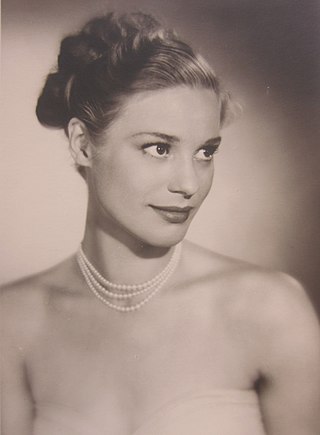
Ingrid Lilian Thulin was a Swedish actress and director who collaborated with filmmaker Ingmar Bergman. She was often cast as harrowing and desperate characters, and earned acclaim from both Swedish and international critics. She won the Cannes Film Festival Award for Best Actress for her performance in Brink of Life (1958) and the inaugural Guldbagge Award for Best Actress in a Leading Role for The Silence (1963), and was nominated for a Best Supporting Actress BAFTA for Cries and Whispers (1972).
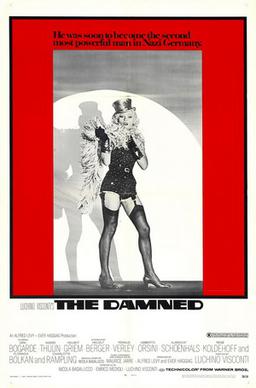
The Damned (Götterdämmerung) is a 1969 historical-drama film directed and co-written by Luchino Visconti, and starring Dirk Bogarde, Ingrid Thulin, Helmut Berger, Helmut Griem, Umberto Orsini, Charlotte Rampling, Florinda Bolkan, Reinhard Kolldehoff and Albrecht Schönhals in his final film. Set in 1930s Germany, the film centers on the Essenbecks, a wealthy industrialist family who have begun doing business with the Nazi Party, and whose amoral and unstable heir, Martin, is embroiled in his family's machinations. It is loosely based on the German Krupp family of steel industrialists from Essen.

Salon Kitty was a high-class Berlin brothel used by the Nazi intelligence service, the Sicherheitsdienst (SD), for espionage purposes during World War II.
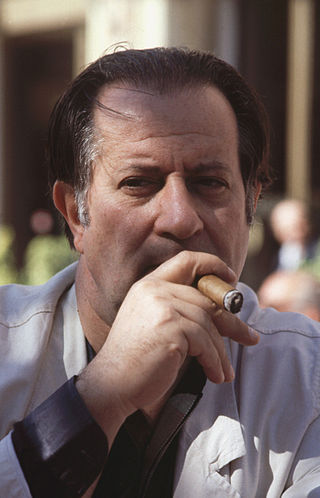
Giovanni "Tinto" Brass is an Italian film director and screenwriter. In the 1960s and 1970s, he directed many critically acclaimed avant-garde films of various genres. Today, he is mainly known for his later work in the erotic genre, with films such as Caligula, Così fan tutte, Paprika, Monella and Trasgredire.

Sir Kenneth Adam was a German-British movie production designer, best known for his set designs for the James Bond films of the 1960s and 1970s, as well as for Dr. Strangelove and Salon Kitty.

Helmut Berger was an Austrian actor, known for his portrayal of narcissistic and sexually ambiguous characters. He was one of the stars of European cinema in the late 1960s and 1970s, and is regarded as a sex symbol and pop icon of that period.

Nazi exploitation is a subgenre of exploitation film and sexploitation film that involves Nazis committing sex crimes, often as camp or prison overseers during World War II. Most follow the women in prison formula, only relocated to a concentration camp, extermination camp, or Nazi brothel, and with an added emphasis on sadism, gore, and degradation. The most infamous and influential title is a Canadian production, Ilsa, She Wolf of the SS (1974). Its surprise success and that of Salon Kitty and The Night Porter led European filmmakers, mostly in Italy, to produce similar films, with just over a dozen being released over the next few years. Globally exported to both cinema and VHS, the films were critically attacked and heavily censored, and the sub-genre all but vanished by the end of the seventies.

John Steiner was an English actor. Tall, thin and gaunt, he attended the Royal Academy of Dramatic Art and performed on-stage for the Royal Shakespeare Company, but was best known to audiences for his roles in Italian films, several of which became cult classics.

Teresa Ann Savoy, FRSA was a British actress who appeared in a number of Italian films.
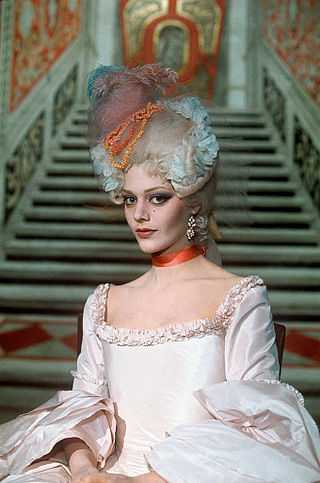
Maria Christina "Tina" Aumont was an American actress. She was the daughter of French actor Jean-Pierre Aumont and Dominican actress Maria Montez. She made her acting debut in the British film Modesty Blaise (1966), but later had a prominent career as a leading lady in Italian films.
Fräulein Devil, also known as Captive Women 4, Elsa: Fraulein SS and Fraulein Kitty, is a 1977 French Nazi exploitation film.

Maria Michi was an Italian supporting actress who worked with Roberto Rossellini on his two early neorealism masterpieces: Rome, Open City and Paisà.

Fernande Grudet, also known as Madame Claude, was a French brothel keeper. In the 1960s, she was the head of a French network of call girls who worked especially for dignitaries and civil servants.

Bekim Fehmiu was a Yugoslavian theater and film actor. He was the first Eastern European actor to star in Hollywood during the Cold War, and one of the internationally best-known ethnic Albanian actors.
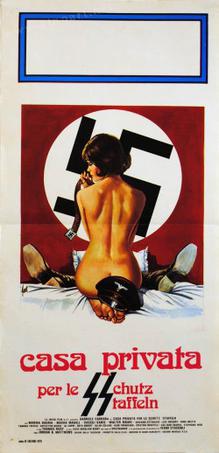
SS Girls is an 1977 Italian Nazisploitation comedy film by director Bruno Mattei. The film is about a brothel where traitors of the Nazi high command are eradicated. To help the brothel out, a Nazi commander, involved in intelligence work, enlists the aid of scientists who train various prostitutes to sexually satisfy the desires of the Nazi high command and root out any traitors.
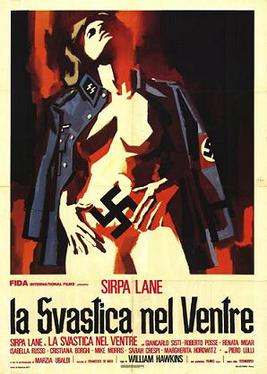
Nazi Love Camp 27 or The Swastika on the Belly is a 1977 Italian Nazi exploitation film by Italian director Mario Caiano and starring Finnish actress Sirpa Lane. In between brutal depictions of a brothel in a concentration camp and a high-class brothel for leading Nazis, the film partially focuses upon the Lebensborn program and, albeit being generally categorized among erotic films, it is one of the few Nazisploitation films to contain scenes that have been considered hardcore pornography.

Monica Swinn, is a Belgian actress, best known for her roles in European softcore pornographic films of the 1970s, particularly those of the sexploitation and horror film genres. She acted in 20 of Jesús Franco's films, which occasionally featured her in hardcore lesbian scenes with Lina Romay and another Franco regular, Alice Arno; different versions of films such as Female Vampire (1973) had to be produced because of their explicit scenes. She tended to play characters with a sexual vulnerability, usually maids, prisoners or isolated aristocratic women, although two of her lead roles were as a sadistic wardress in Franco's women in prison film Barbed Wire Dolls (1976) and as a nightclub singer and Madam for the SS in Alain Payet's Nazisploitation film, Hitler's Last Train (1977). According to Swinn herself she was typecast, recalling after reading a typical Franco script: "I'd mull over the previous scenes and think to myself, "This can't be the same character. How many films am I really making here?".
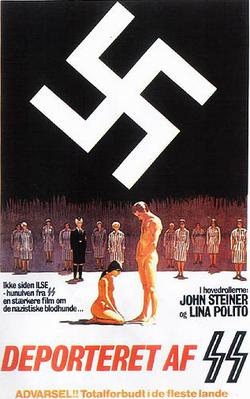
Le deportate della sezione speciale SS is a 1976 Italian erotic-drama film directed by Rino Di Silvestro. The film is considered the first Italian Nazi exploitation film, after the "auteur" progenitors such as Liliana Cavani's art film Il portiere di notte and Tinto Brass' exploitation film Salon Kitty.
Malisa Longo is an Italian actress, model and writer.
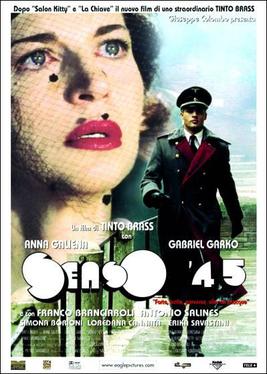
Senso '45 is an Italian erotic drama film written and directed by Tinto Brass, based on the novella Senso by Camillo Boito, which also inspired Luchino Visconti's 1954 film.

















